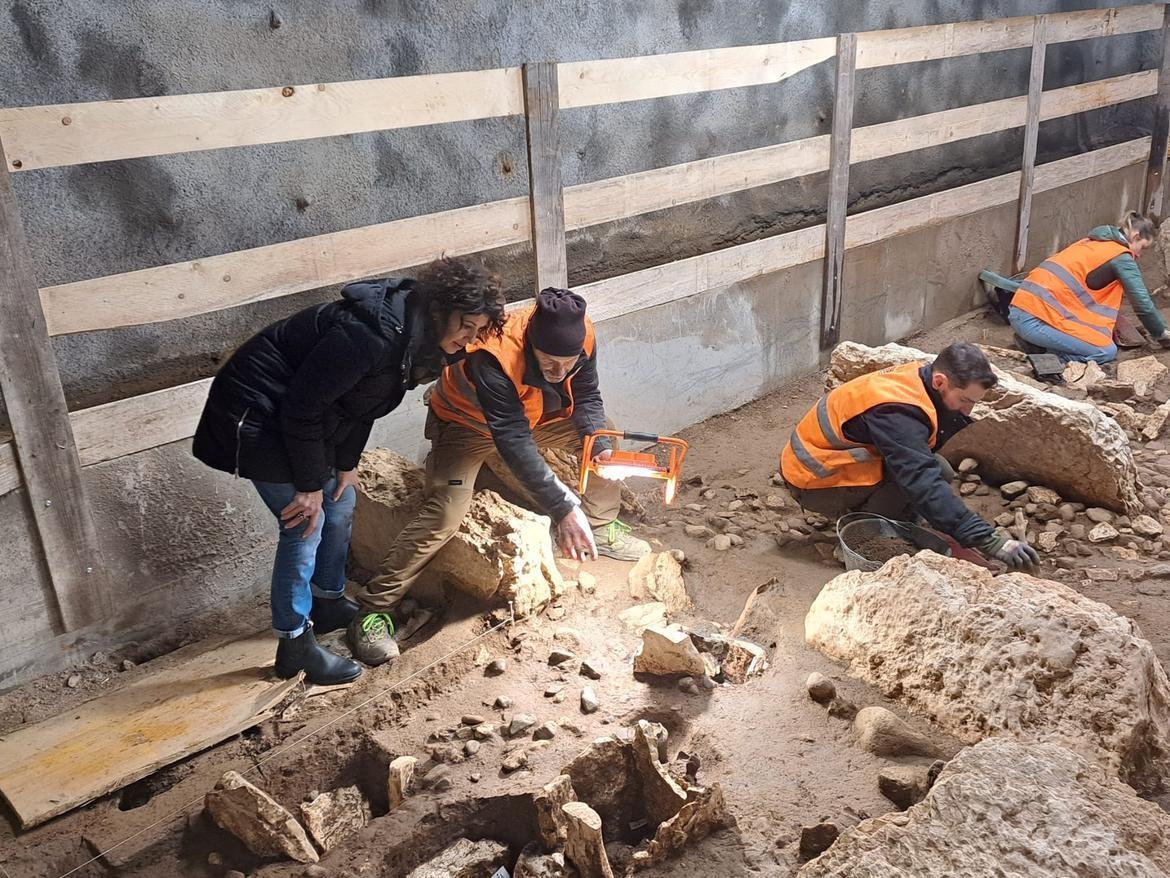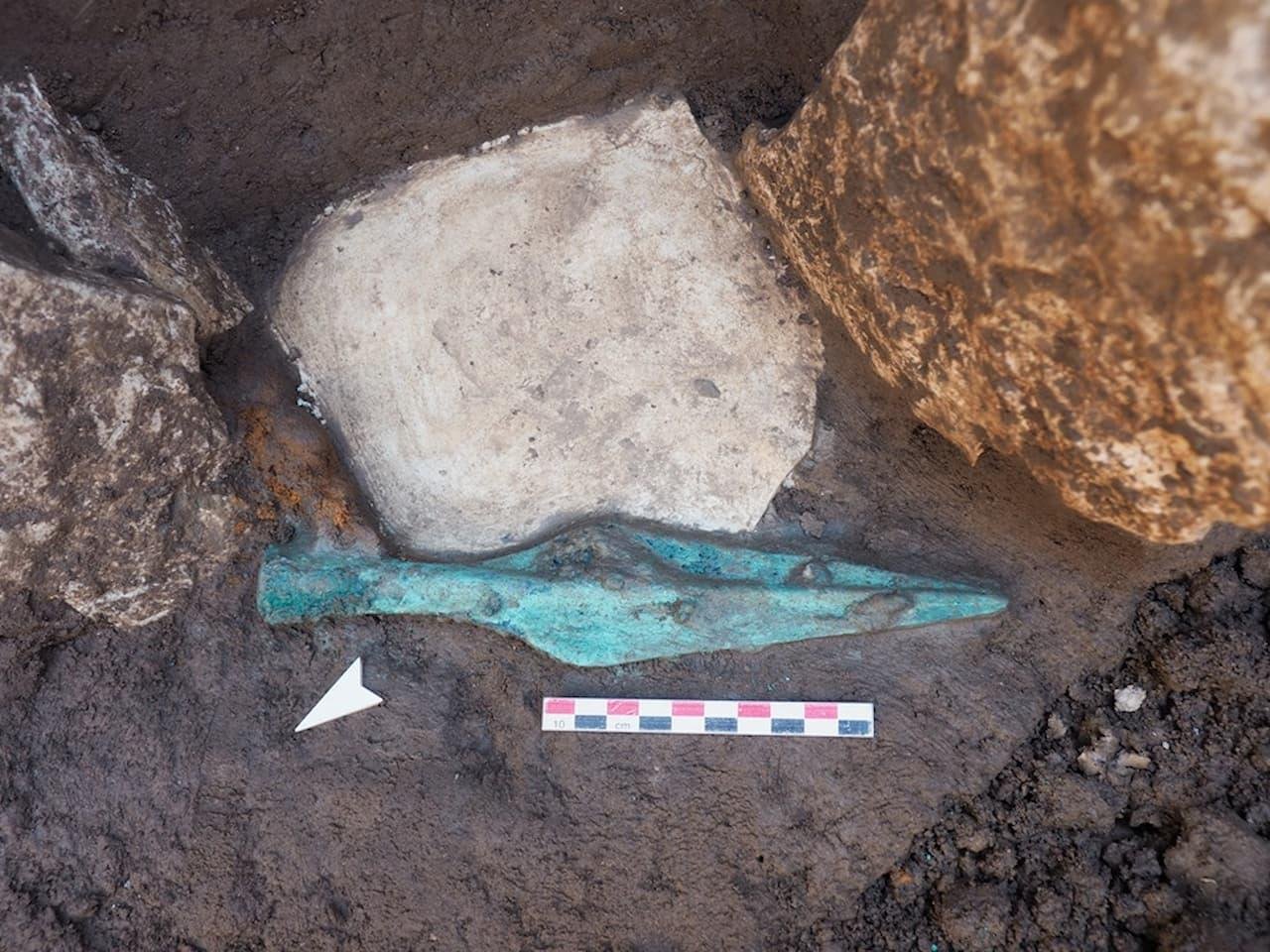A recent find in Trento, Italy, has brought new understanding of the city’s old history. Excavations on Via Santa Croce have uncovered a big necropolis from the Early Iron Age, between 800 and 500 BCE. This discovery, with over 200 graves, gives researchers key insights into burial practices and social structures of Alpine communities that lived there long before Rome’s influence.
 Bronze ornamental elements of a breastplate found in the necropolis. Credit: Archivio Ufficio Stampa PAT
Bronze ornamental elements of a breastplate found in the necropolis. Credit: Archivio Ufficio Stampa PAT
The discovery was made during restoration work on a historic building, conducted under the supervision of the Archaeological Heritage Office of the UMSt Superintendence for Cultural Heritage and Activities of the Autonomous Province of Trento. The site, located eight meters under today’s street, remained well-preserved because floods over hundreds of years sealed the archaeological layers.
The necropolis’s location in Trento’s city layout next to where the Fersina River used to flow, highlights its historical and scientific importance.
Superintendent Franco Marzatico emphasized the broader historical significance of this period: “The Iron Age was a period of profound historical and cultural transformation across the Mediterranean, the Alpine region, and beyond. It was an era that saw the flourishing of the great civilizations of the Etruscans, Phoenicians, Greeks, and Celts, alongside events such as the first Olympic Games (traditionally dated to 776 BCE) and the founding of Rome in 753 BCE.”
 Francesca Gerosa, Vice President and Provincial Councillor for Culture, visits the excavation site. Credit: Archivio Ufficio Stampa PAT
Francesca Gerosa, Vice President and Provincial Councillor for Culture, visits the excavation site. Credit: Archivio Ufficio Stampa PAT
The necropolis stands out due to its towering funerary stelae, some of which are as high as 2.4 meters. These stone markers form subparallel rows running north to south, marking the edges of primary tombs. Stone chambers house these tombs, which are covered by tumular structures. Over time, smaller burials accumulated around these principal tombs, creating a dense funerary complex.
Archaeologists have used micro-stratigraphic excavation techniques to reconstruct the complex funerary rituals of these ancient societies. They found cremated remains often collected in perishable containers or ossuary vases. This shows that the deceased were subjected to ritualized treatment before burial. Some remains had fabric wrapped around them, held in place with fibulae or pins. This points to a sophisticated funerary tradition.
 Spearhead discovered in the necropolis. Credit: Archivio Ufficio Stampa PAT
Spearhead discovered in the necropolis. Credit: Archivio Ufficio Stampa PAT
The high-status people buried in the necropolis were laid to rest with many valuable items. These objects give key clues about their society’s trade networks and cultural affiliations. The grave goods include metal weapons and finely crafted ornaments inlaid with amber and glᴀss paste, pointing to connections with Italic groups like the Etruscans and Veneti.
“This site offers the opportunity to study the elite of a society that, settled in the Trento basin, demonstrated its power and prestige through the deposition of funerary objects of great symbolic value,” Marzatico explained.
Experts Susanna Fruet and Dr. Chiara Maggioni are restoring these objects. Their expertise in micro-excavation techniques has helped preserve delicate finds such as ossuary vessels and fabric remnants.
 A view of the necropolis in Trento. Credit: Archivio Ufficio Stampa PAT
A view of the necropolis in Trento. Credit: Archivio Ufficio Stampa PAT
Given the importance of the site, an interdisciplinary team of experts from Italian and international insтιтutions will continue studying the necropolis. Their research will include analyses of human remains, archaeobotanical samples, and grave goods to further unravel the social organization, rituals, and beliefs of this Iron Age community.
Considering how crucial the site is, a team of experts from Italian and international insтιтutions will continue studying the necropolis. Their work will include analyses of human remains, archaeobotanical samples, and grave goods to gain a better grasp of how this Iron Age group organized their society and performed their rituals.
More information: Provincia Autonoma di Trento





